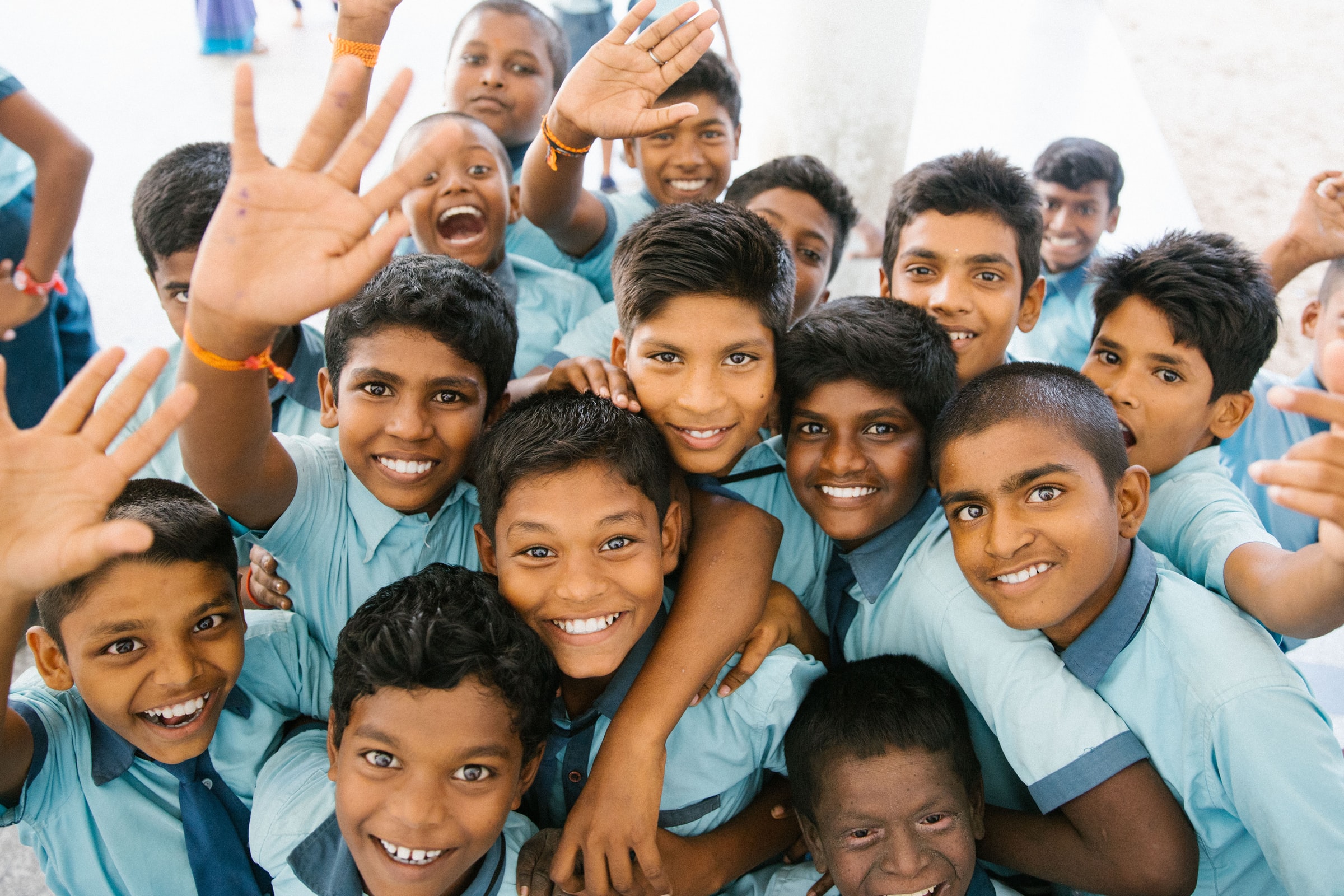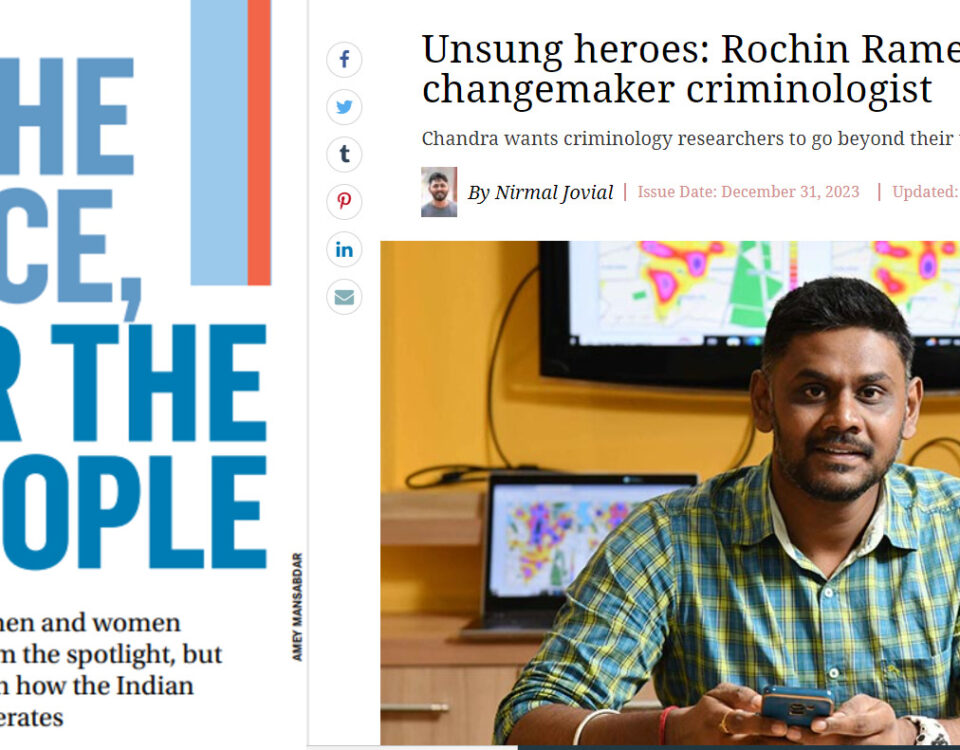The Mantra of Happy Education

Crime against women in Rajasthan sees over 100% jump in May
July 1, 2020
Evidence for Evidence-Based Policing
March 5, 2022
Picture Credits: Church of the King on Unsplash
In the happiness class, there must not be anything that is truly right or wrong; instead students should be given the freedom to express themselves, without judgment or embarrassment.
National Education Policy 2020, commonly known as NEP, is a policy document on education introduced by the Ministry of Human Resource and Development (MHRD) and subsequently approved by the Union Cabinet in July 2020. The present policy, which seeks to provide a more holistic and comprehensive framework for school and higher education in the country, comes 34 years after the previous policy, announced in 1986 and revised in 1992.
The NEP promises to address the twin problems of our education system, namely rote learning and memorization and the disconnect between educational content and real-world problem solving. To meet this commitment, the NEP recognizes the need to integrate experiential and discovery-based learning approach into our teaching methods, besides evaluating ‘higher order skills’ such as creativity, critical thinking, idea-generation, visualization, entrepreneurial traits, and innovation activities. The new NEP also aims to increase public investment in the education sector, promote the ‘continuous professional development’ of teachers for upgrading their skills, and to set up a dedicated e-education unit to bolster the digital infrastructure for knowledge sharing in post-covid environment.
Notably, the main aim of this policy is to achieve the target of universalization of education from preschool to secondary level with 100% Gross Enrolment Ratio (GER) in school education by 2030. To achieve this goal, the NEP aims to bring back two crore out-of-school and drop-out children into the mainstream through open schooling, cover the presently uncovered age group of 3-6 years under school curriculum with three years of Anganwadi/preschooling, and to expand mid-day meals scheme with provisions of breakfast in schools.
Under this backdrop, a one-day Sub-Regional Consultation was held on ‘School Education in NEP 2020’ at the India International Centre (Main Building), New Delhi. The consultation, which responded to a number of uncomfortable questions about the viability and doability of NEP, drew a wide range of participants including key government officials, scientific advisers, civil society representatives and academics from the fields of education, health, nutrition and criminal justice.
The idea behind the consultation was to understand the prospects and challenges of universalizing education, as envisioned in NEP. On a related note, this post elaborates on the significance of ‘Happiness Curriculum’, which was introduced by the Aam Aadmi Party to ensure holistic development of Delhi’s government school students. Incidentally, this aspect of students well being is also recognized in the new education policy, as it emphasizes on creating good and responsible human beings.
For this post, excerpts were collected from the speeches of two key thinkers on education, namely, Mr. Shailendra Sharma, Principal Advisor to Delhi Governments’ Director of Education, and Professor R. Rochin Chandra, Director & Chief Criminologist, Center for Criminology & Public Policy, India, both of whom acted as resource persons at the consultation.
Need for Happiness Assessment
Delhi’s Happiness Curriculum, a path breaking educational program to enhance the mental well being, resilience and motivation of children in state government schools, is an impressive initiative which has won commendations from different corners of the globe. Echoing somewhat similar sentiments, Mr. Sharma, who praised Delhi government for carrying out happiness classes and reinventing school education, held that “[t]his scheme generated ‘hope’ for students, whose lives were stressed and strained by the COVID induced lockdown”, while adding that, “the new initiative can bring sustainable happiness in children’s lives which will eventually result in happier and emotionally sound adults”.
Despite the positive anecdote, Prof Chandra pushed back and questioned whether there are any changes in student behaviors because of the happiness curriculum? Astoundingly, he felt that the curriculum was breathlessly hyped and needed to be tested for effectiveness by observing happiness classes, talking with curriculum developers, and engaging with students, teachers and happiness mentors. This exercise, according to him, will give a more complete picture of the curriculum and help address the learner’s mental and emotional needs.
The new happiness curriculum generated ‘hope’ for students, whose lives were stressed and strained by the COVID induced lockdown. It can bring sustainable happiness in children’s lives which will eventually result in happier and emotionally sound adults.
Child centered approach for happiness
Another major concern raised during the consultation was the scripted nature of the happiness curriculum. While some school leaders believe that ‘one-size-fits-all reading curricula’ and ‘prescribed classroom-management routines’ may lead to better standardized results and prevent classrooms from erupting into chaos, Prof Chandra, on the other hand, felt that a standardized learning approach will only tune out students, leave them disengaged, and bore them out of their minds, besides, resulting in loss of creative, flexible differentiation – tailoring instructions to meet each child’s needs, strengths and interests. He also explained that boredom is like a grab-bag that covers frustration, depression, disgust, indifference, and apathy. It instigates a desire to escape from the situation that causes boredom, often prompting students to bunk off school and perhaps indulge in smoking, drinking, gambling, and drugs (all of which is painfully common in Delhi).
This reasoning, while persuasive, makes one think, if the new happiness curriculum offers students the freedom to decide what makes them feel significant, excited, and happy. Or do we need to adopt a novel, child-centered approach that connects real-life to learning and values what is interesting and joyful for students. In this respect, it is also pertinent to note that happiness varies from person to person, and, likewise, each child has diverse and complex needs. These needs can be sufficiently understood and fulfilled when they are the primary drivers. At its very essence, happiness is not limited to any particular activity; it permeates the overall experience and satisfaction of students with their classes, courses, engagements, outcomes and beyond.
A prescribed one-size-fits-all curricula for happiness will only tune out students, leave them disengaged, and bore them out of their minds, besides, resulting in loss of creative, flexible differentiation – tailoring instructions to meet each child’s needs, strengths and interests.
Developing empathy in classroom
Notably, the deliberation on happiness scheme was limited to evaluation and (de)standardization of the curriculum. This left some of the key issues related to happiness class unaddressed. For instance, has the happiness class improved the teacher-student relationship? What pedagogical approaches are being used to guide happiness period and how appropriate are they in fostering socio-emotional well being and resilience in learners?
To drill down on these issues, I spoke to Prof Chandra after the consultation. The conversation, which lasted for about an hour, drew some constructively critical responses.
For example, while explaining the viability of current pedagogical practices, Prof Chandra said that: “happiness curriculum is an excellent opportunity to address the children’s emotional and mental needs by creating a stimulating environment through mindfulness, critical thinking, story-telling and experiential, play based activities. But the current ‘instructional method’ may reduce children to mere receivers of information and passive participants. In the happiness class, there must not be anything that is truly right or wrong; instead students should be given the freedom to express themselves, without judgment or embarrassment. Perhaps, the best way to conduct happiness class is through working with children’s curiosity, interests and habits of mind, while ensuring that all students participate in classroom activities and internalize the ideas and concepts shared.”
Finally, on the issue of promoting positive student-teacher relationships through happiness class, Prof Chandra noted that school education in India has predominantly been driven by fear, discipline and power, and the time is ripe for happiness teachers to adapt their classroom practices and instructions to remove hesitation of students and form really supportive and secure bonds with them. “Such bonds will have a far-reaching impact on all aspects of students’ life, as they’d become comfortable in airing the problems affecting them inside and outside the school besides avoiding harmful gender stereotypes”, he added.
Perhaps, the best way to conduct happiness class is through working with children’s curiosity, interests and habits of mind, while ensuring that all students participate in classroom activities and internalize the ideas and concepts shared.
ABOUT THE AUTHOR





